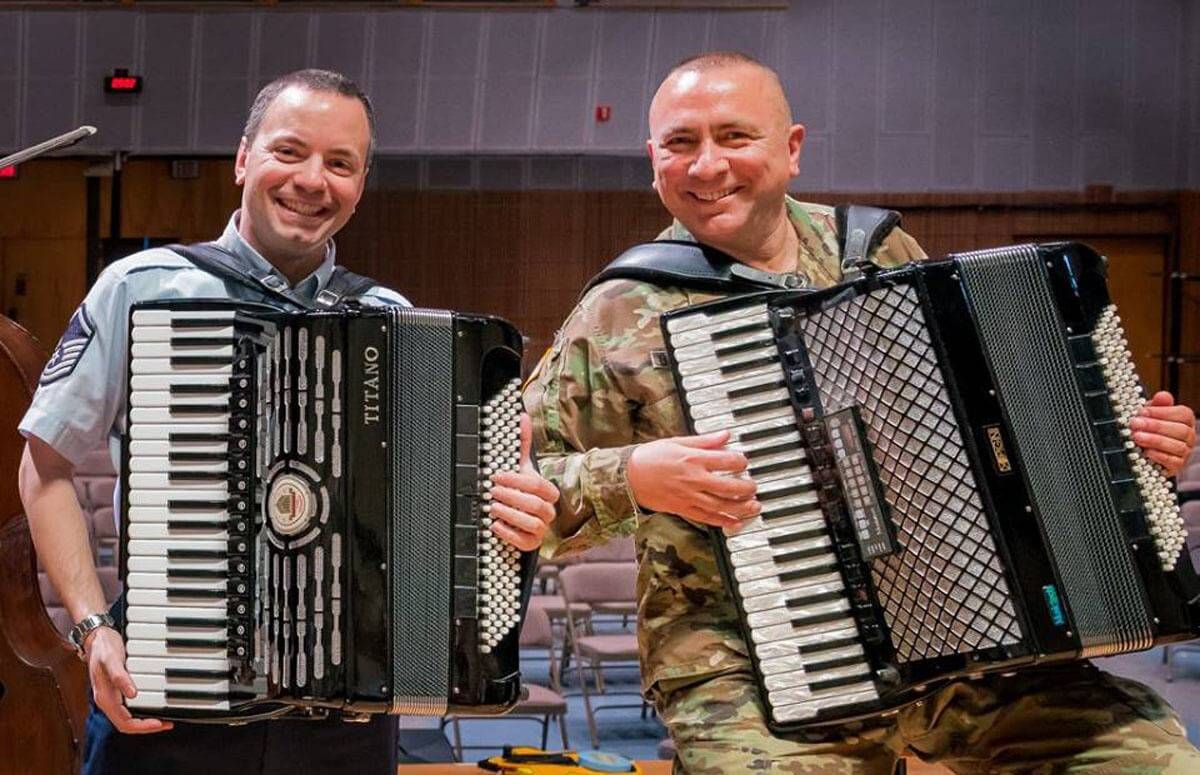The Accordion Is Back! Give It a Hug!
This versatile and beloved instrument is enjoying a renaissance
What do you call an accordion player with a pager? An optimist.

The old joke aside, the funny thing about the accordion is that this offbeat musical instrument remains a beloved part of our lives. It appears at family gatherings, and adds a perky layer to many familiar songs. The sound of the accordion is fluid but unmistakable, and its upbeat, familiar tone crosses cultures and endears nearly every generation.
“It is one of the few instruments that you actually hug in order to play it,” says Angelo Paul Ramunni, author of Accordion Stories from the Heart. “A person wants to hug only someone or something that you really care for, or love. An accordion needs to be hugged so it fits snug up against your body. The straps on the accordion enable it to hug you back. It has a voice or sound similar to the sound that comes out of our voice box. It has a heartbeat, called tempo. We have lungs that give us breath and the accordion has bellows that do the same for it. It even has a set of feet as we do.”
"In some countries, it's a matter of folk pride; in others, it has a nostalgic or retro value."
Rumanni, 70, who lives in Canaan, Conn., played the accordion when he was a teen and reconnected with the instrument in 2008.
“The accordion was created to help common people have fun," he says. "We usually don’t take it out for funerals or times when people are angry. I have found that the people who play the accordion do so because they want to make the lives of others better by playing happy-sounding tunes.”
'One of the Most Versatile Instruments in the World'
Opinions vary on where and how the first accordion was invented. This much is known: Cyrill Demian of Vienna, Austria patented an instrument called the “accordion” in 1829, formalizing its existence, and manufacturing began soon after in Europe.
Back then, music was important to people of every economic level, and the accordion became a fixture in vaudeville shows, saloons, dance halls, and street music venues.

“The accordion was portable, and seldom needed tuning,” says Norman Seaton, president of the National Accordion Association. “It was a primary musical instrument for those in temporary churches [like tents and storefronts] because the musician took the accordion home after each service.”
The accordion" is one of the most versatile instruments in the world — I play baroque, classical, jazz, rock, funk, heavy metal, world and many types of folk music,” says Michael Bridge, classical musician and accordionist.
Bridge began to play the accordion after his mother bought one on impulse at a garage sale for $5. The 26-year-old Canadian concert musician debuted with the Boston Pops at 17 and was dubbed one of “30 Hot Classical Musicians Under 30.”
He received his master’s degree in accordion performance from the University of Toronto in 2017 and is working on his doctorate at the University of Toronto (the first North American to do so). He uses acoustic and digital accordions in his live performances of baroque, classical, and contemporary concert music.
Here is Bridge’s solo performance of Tchaikovksy’s 1812 Overture.
The Revival of the Accordion
“During the 1930s to 1950s, business entrepreneurs in the USA developed huge marketing schemes to sell, sell, sell as many accordions as possible — to the point that accordion was the fastest growing instrument in the USA in 1938 and 1939,” says Bridge.
The low price and beauty of the accordion attracted working class families, crossing into nearly every culture and community. It became the darling of dances, weddings and other community gatherings, rasping the familiar sounds of the “Bird Song/Chicken Dance” and the “Tarantella.”
North Dakota teenager Lawrence Welk convinced his father to buy him a mail-order accordion, and he went on to perform his champagne-style music in front of loyal television viewers on The Lawrence Welk Show, which aired from 1955 to 1982.
And it was in the late 1970s- early 1980s when "Weird Al" Yankovic burst onto the scene, incorporating the accordion into many of his parody tunes such as "My Bologna" (based on "My Sharona" by the Knack).
The commercial growth of the accordion outpaced its artistic growth, says Bridge, who believes this may have been the reason behind its decline. But the squeezebox persisted, and soon younger musicians pulled it out of the family closet or attic and began breathing music into it again.
Recently, the complexity and mutability of the reinvented digital accordion has blown the stereotypical dust off the bellows.
“Many people under the age of 40 or so have had no contact with the accordion. So, it is starting to enjoy a sort of revival,” says Ramunni. “It has gone full circle and is coming around again. People are curious about how to create music rather than just having it streamed to them on their electronic devices.”
From The Beach Boys to Weird Al
Today, the accordion is recognized as a key player in the music world, with groups such as the National Accordion Association and the American Accordionists’ Association building memberships and sponsoring events across the country. From July 17 to 21, the American Accordionists' Association will hold its annual festival, featuring workshops and competitions for all ages, in King of Prussia, Pa.
Well-known musicians such as Bruce Springsteen and bands like Counting Crows include the accordion in songs. Two accordionists played on The Beach Boys’ iconic “Wouldn’t It Be Nice” from the 1966 Pet Sounds album. Recently, Weird Al Yankovic made a cameo appearance with the band Weezer, playing Toto’s “Africa.” In Season 3 of Mad Men, Christina Hendricks (in the role of Joan Holloway) showed off her accordion skills by playing "C’est Magnifique" at a dinner party.
“In its relatively short life, the accordion has become one of the most widespread symbols of folk music from Finland to the Balkans, from China to Brazil, from Russia to the USA, and in countless other countries,” says Bridge. “In some countries, it’s a matter of folk pride; in others, it has a nostalgic or retro value.”


